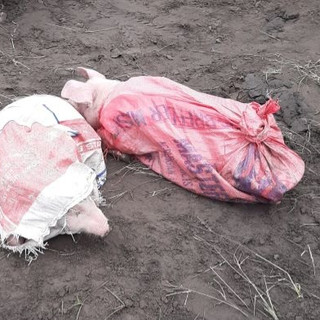
Taal, Batangas — A journalist’s most important weapon right now is the N95 mask, not so much the pen or voice recorder. Maybe of equal importance is the mobile phone, which can do a lot of things for you. But without a mask, you won't be able to last 20 minutes covering the Taal volcano eruption. Thus the price of this extremely in-demand item has shot up from P30 to as high as P500 a piece. Some unscrupulous businessmen know how to capitalize on a calamity.
I came to Batangas three days after Taal volcano erupted. But even after the volcano's wrath settled quite a bit, I still have to wear a mask because the sulfuric stench from the volcano and ashfall linger in the air.
As early as March 2019, the Philippine Institute of Volcanology and Seismology issued alert warning No. 1 on Taal as instruments recorded unusual activity inside the volcano. But many took the warning for granted.
Before noon on Jan. 12, Taal suddenly erupted, spewing out thick smoke, creating thunder-like sound and triggering lightning from its crater. Everyone was stunned and caught off guard. Mud and ashfall began to hit many areas— including Metro Manila, located about 60 kilometers from Taal.
For many, it was too late to make adequate preparations. Everyone scrambled for things they could reach and carry. Amid their dash for safety, all they managed to save were the clothes they were wearing.
By late afternoon, the worst of the first series of explosions was felt in the whole province of Batangas as well as the neighboring provinces in northern part of Luzon.
While people scrambled for safety and secured spots at the evacuation center, animals — thousands of them abandoned in their cages — were left to bear the brunt of the eruption.
Maria Evangeline Sarmiento Tenorio, 52, fled her home along with her two children and her husband, leaving behind her piggery and a dog in her home in Barangay Buso-Boso in Laurel, Batangas.
From left, Taal volcano continues to spew thick smoke; residents take refuge at a sports complex that has been designated as evacuation center; two men repair the roof of their house. Photos by Jinky Jorgio
Tenorio said she went back Monday and found her piggery, with five pigs inside, totally damaged and the hogs buried in the mud. She tried to pull up the roof hoping she could save one, if not all of the pigs, but the mud and ashes were too heavy for her to even move the tin roof. “I tried but I was not able to get them out. They were all dead,” she said.
What made Tenorio smile, nevertheless, was her dog, Jackie, whom she said they left when they frantically went out of the house.
"Hello Jackie, thank God you are alive,” she said.
Jackie greeted her happily, wagging its tail as soon as she saw her. Jackie got stuck in a mud when she followed Tenorio, who also got stuck in the mud while going inside the house. The dog helplessly pulled itself as it whimpered out of the mud.
Not far from her home, Tenorio found two rescued pigs wrapped in a sack. One hungrily nibbled on grass while the other suddenly started growling aloud when it noticed a movement near it. A few feet away, there was a carabao tied to a tree scratching mud off its body.
A man walks with his goat and a dog; a carabao tied to a tree; and two rescued pigs wrapped in sacks. Photos by Jinky Jorgio
Some people were carrying chickens that they have managed to rescue. Most of their chickens are gone but the owners did know if they perished in the ashfall or were able to find refuge. "I hope they’re still alive,” said Euleterio Encarnacion, 59.
A man was holding a rope that leashed his goat. He gave me a gloomy smile. A dog was following him.
An undetermined number of animals have perished in the eruption. Horses, pigs, dogs, cats and goats.
Some residents collected dead fish including tilapia, bangus, tawilis, maliputo for consumption but the police warned that they might be contaminated. The police tried to confiscate them but the residents pleaded to allow them to keep the fish, which they believed were safe to eat.
Tawilis (fresh sardines) and Maliputo (white flat fish) can only be found in Batangas and the contamination threatens their sustainability.
Several people used their limited resources and risked their lives to rescue animals. Members of the Philippine for Ethical Treatment of Animals (PETA) were stranded in Taal town while trying to rescue horses. The Coast Guard managed to rescue some dogs.














